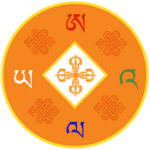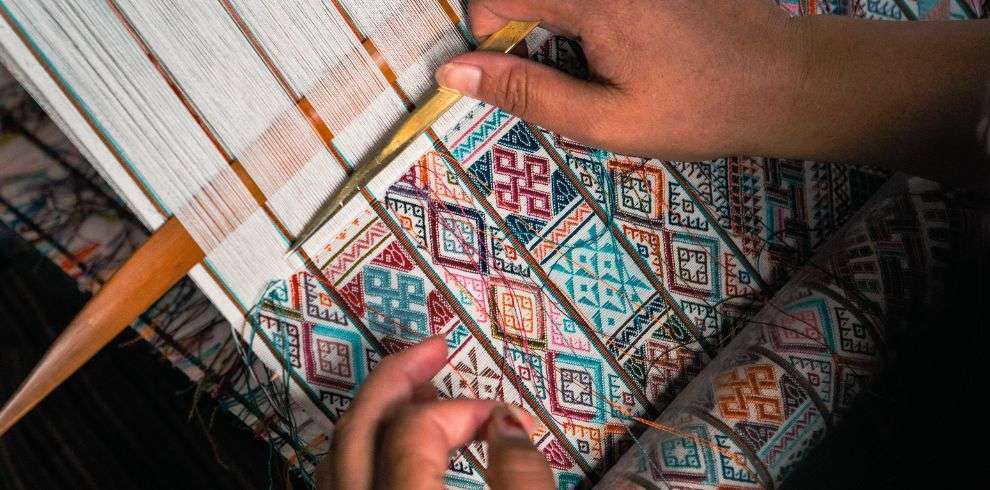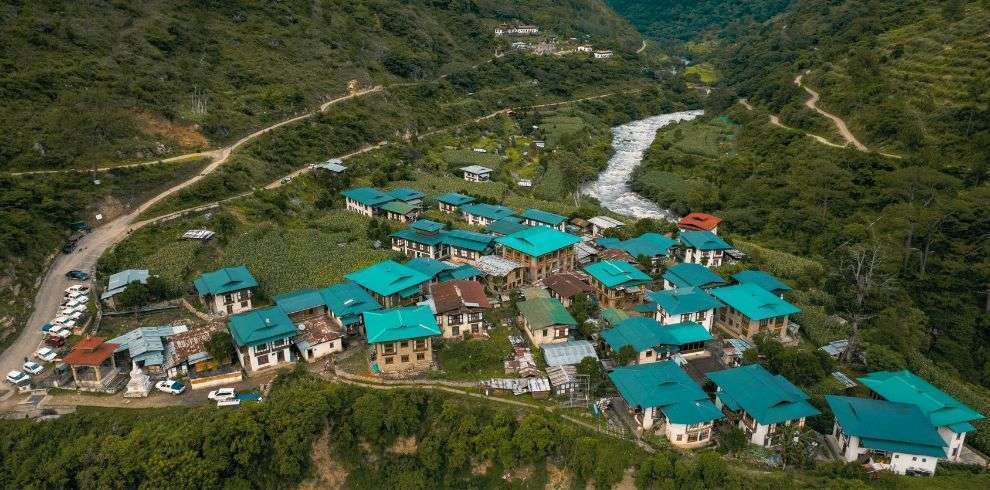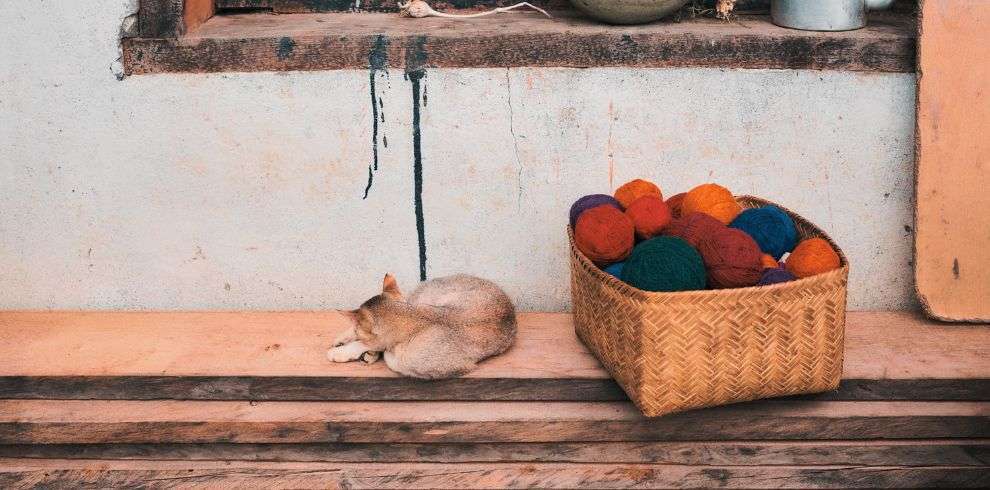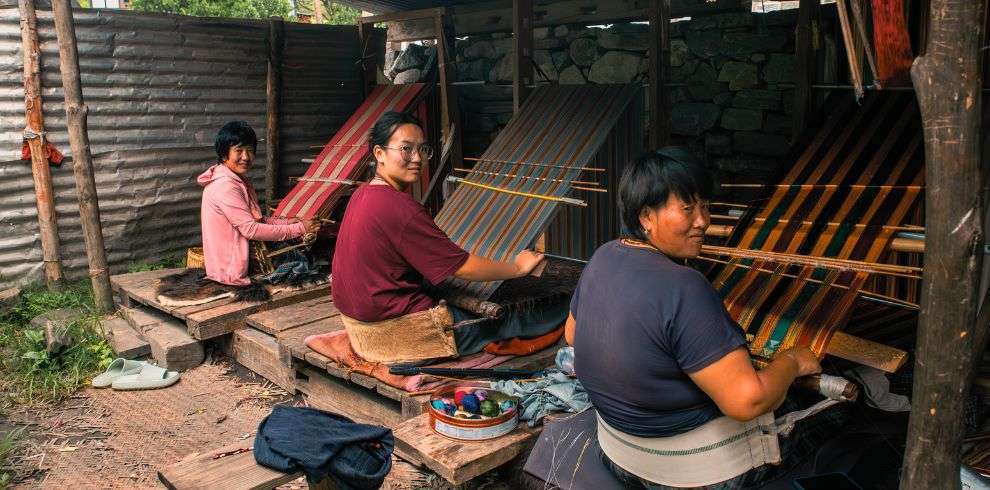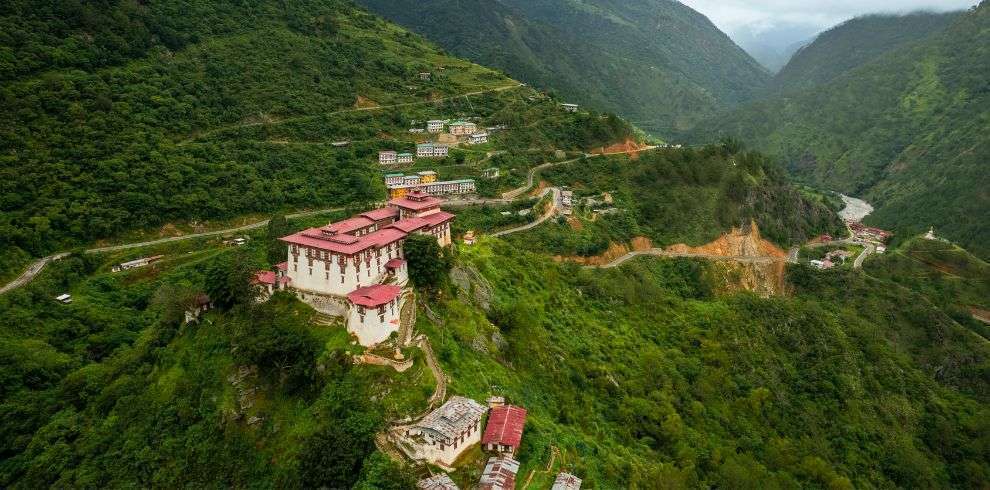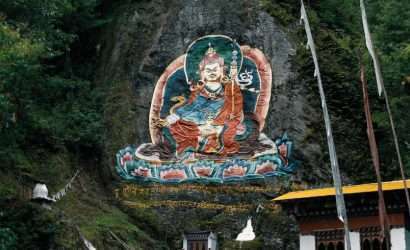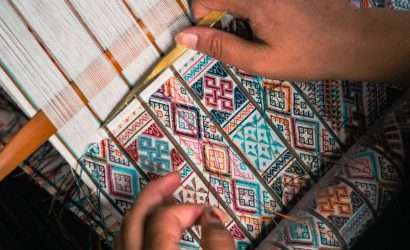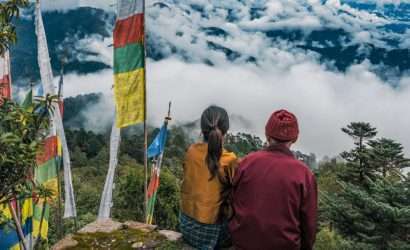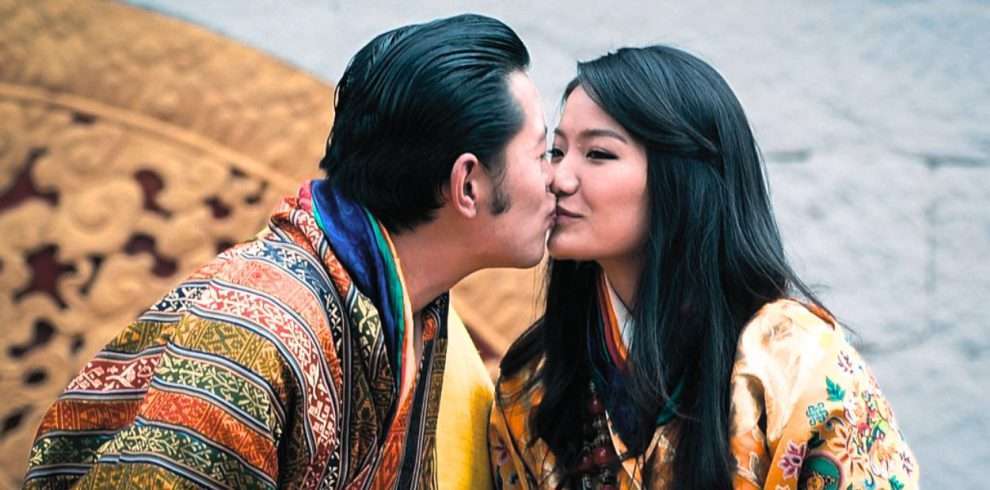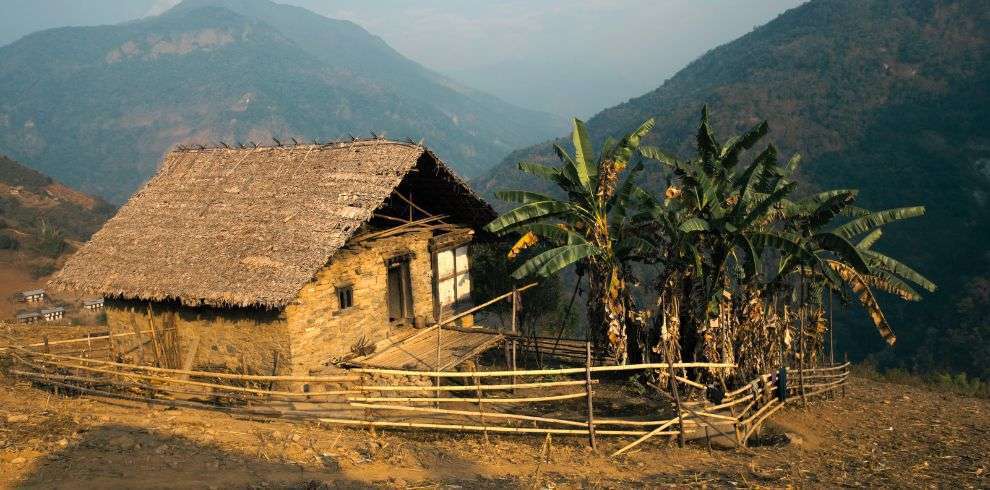This Dragon’s Textile Tales – KURTOE KHOMA VILLAGE Tour takes you across the country and offers a rare insight into Eastern Bhutan. The journey from East to West is one of the most beautiful in the Himalayas crossing 3,800 meters high Thrumshingla pass. Gushing waterfalls, steep cliffs with even steeper drops, blazing flowers and constantly changing vegetation combine to make the journey as varied as it is beautiful.
Mongar marks the beginning of Eastern Bhutan. This tour is the complete package of everything from the exotic weaving community of Khoma village which is one of the extraordinary villages in Bhutan, ancient villages to the whirlwind of towns, panoramic Himalayan views to the lush, wildlife rich jungles guaranteed to provide a lifetime memorable experience.
Overview
The village of Khoma in the region of Lhuntshe in Bhutan is still an active weaving community whose history lies in the depths of the textile that were created and are still being woven solely by the women of the community. Bhutan celebrates its textile craftsmanship to this day as the country formulates the wearing of the national attire ‘Gho’ for men and ‘Kira’ for women which are largely woven on a back-strap loom, hence the practice of this craft is spread across the country.
The weaving community of Khoma is one of the extraordinary villages in Bhutan, where it is apparent that weaving textiles is a lifestyle they’ve adopted and a means of expression. Every single woman from this village is naturally brought up learning and practicing this craft conventionally through kindred bonds with their mothers. It is also known that they specialise in a certain technique of weaving known as the Kishuthara (silk on silk textile) which involves weaving supplementary weft patterns with extra yarns over the constructed base yarn generally using silk yarn as the base and silk again for constructing the patterns and motifs known as ‘trima’.
Several women in that community have mastered the art of weaving a kishuthara which takes years of practice and the rest of the women expressed aspirations to master it someday. Oral traditions and folksongs indicate that this intricate technique of back strap loom was introduced by Chinese Princess Wencheng, known to the locals as ‘Ashi Jyazum’ back in the 7th century, and traces of her life remain as stories and heritage for Khoma.
Itinerary
You will have glorious view of the snow-capped Himalayas. The remarkable and steep descent into the Paro valley is an awe-inspiring experience. Paro is the gateway to Bhutan, home to the only international airport. This is where you begin the journey to the land of happiness. After visa formalities and collection of baggage, you will be welcomed by the Bhutanese representative from Bhutan ALAYA @Traveling. And transfer to your hotel in Paro. The charming valley of Paro comprises both the ancient as well as the modern face of Bhutan. Paro is the home to some of the oldest and most revered temple in Bhutan. This is where the famed Tiger Nest Monastery is located.
Today’s Activities
- Welcome ceremony
- Cultural sightseeing
- Overnight stay in Paro
Place of Interest
• Paro Dzong
• National Museum
• Kichu Lhakang
• Paro Town
Today we will fly to Yonphula in the East. While eastern Bhutan is one of the least explored regions of the Kingdom, it has numerous things to do and see. Eastern Bhutan also is home to the seat of the Royal Wangchuck Dynasty. The Eastern Bhutan is unbelievably serene, unpolluted, relaxed and uncluttered by modern distractions, full of life and far from materialistic. You have opportunities to explore and experience calmness and solitary life of this uncharted lands that will fill your heart with equanimity.
Today’s Activities
- Domestic flight to Yonphula (40 mins)
- Cultural sightseeing
- Overnight stay in Tashigang
Place of Interest
• Tashigang Dzong
• Tashigang Town
• Radhi Village
• Rangjung Woesel Choeling Monastery
• Mongling Goenpa
• Khaling Natinal Handloom Center.
Trashi Yangtse is famous for its wooden crafts. The orderly settlement of Trashi Yangtse rises just above the Chorten Kora, 3km from the old dzong. The new dzong and town occupies a large bowl-shaped valley in one of the furthest corners of the kingdom, 550km from the capital.
Today’s Activities
- Excursion to Tashiyangtse (3-4 hours)
- Cultural sightseeing
- Overnight stay in Tashigang
Place of Interest
• Chorten Kora
• Bomdeling Wildlife Sanctuary
• Institute for Zorig Chusum (13 Arts)
• Tashiyangtse Dzong
Mongar marks the end of Eastern Bhutan. The second largest town in the sub-tropical east, Mongar town is situated on the side of a hill in the contrasts to other towns of Western Bhutan which was built on the valley floor.
Today’s Activities
- Drive to Mongar (2-3 hours)
- Cultural sightseeing
- Overnight stay in Mongar
Place of Interest
• Gom Kora
• Mongar Town
• Mongar Dzong
• Jarung Khashor Choeten
• Yagang lhakang
• Wenkhar Community Farming Center
It is located some 70 km from Mongar and is one of the most isolated districts in the country. The landscape here is spectacular with stark cliffs and gorges and dense coniferous forests. The region is notably famed for its weavers and their special textiles generally considered to be the best in the country. The Kurtoe region of Lhuntse is also the ancestral home of royal dynasty.
We can visit to Khoma Village: The culture of thagzo (hand-loom weaving) is believed to have been prevalent in Bhutan for centuries. According to oral histories, a northern princess known to Bhutanese as Azhi Jyazu, the consort of King Songsten Gembo who built several sacred temples across the Kingdom, is believed to have gifted the art of weaving to the women of Kurtoe in Lhuentse after being moved by their hospitality.
Textiles are Bhutan’s finest art; the products show a heritage built over centuries through shared skills and personal creativity in working with fibres, dyes, weaving, sewing, and embroidery.
Nestled in the serene district of Lhuntse in Bhutan, Khoma is well known for its treasured kishuthara textile. Kishuthara is known for its intricate designs and vibrant colors. Over generations, the skilled weavers of Khoma have honed their craft, creating textiles that are not just visually appealing but deeply rooted in Bhutanese culture. Bhutanese women take pride in owning kishuthara which they wear only during special festivals and celebrations. A visit to Khoma offers a unique opportunity to appreciate the artistry of the kishuthara textile, lovingly crafted by the talented local weavers.
Today’s Activities
- Exursion to Lhuntse (4-5 hours)
- Cultural sightseeing
- Overnight stay Mongar
Places of Interest
• Guru Nangsa Zelnen Statue
• Lhuntse Dzong
• Khoma Village
• Gangzur village
Today will be the longest drive of our entire trip .The journey from Mongar to Bumthang is one of the most beautiful in the Himalayas crossing 3,800 m high Thrumshingla pass. Gushing waterfalls, steep cliffs with even steeper drops, blazing flowers and constantly changing vegetation combine to make the journey as varied as it is beautiful.
Today’s Activities
- Drive to Bumthang(6-7 hours)
- Cultural sightseeing
- Overnight stay in Bumthang
Places of Interest
• Zhongar Dzong
• Thrumshingla Pass 3800 meters
• Ura Valley
• Ura Lhakhang
Bumthang is one of the most beautiful and holiest places in Bhutan. It is home to many of prominent Buddhist temples and monasteries. It’s wide and scenic valleys consists of four main valleys: Ura, Chumey, Tang and Choekhor. The valleys are broad and gentle carved by the ancient glaciers. You can enjoy some of the best day hikes here in Bumthang.
Today’s Activities
- Day hike in Chhokhor Valley (4-5 hours)
- Cultural sightseeing
- Picnic Lunch
- Overnight stay in Bumthang
Places of Interests
• Jambay Lhakhang
• Kurjey Lhakhang complex
• Konchogsum Lhakhang
• Lhodrak Kharchu Buddhist
• Tamshing Lhakhang
• Jakar Dzong
• Mebar Tsho (Burning lake)
• Pema Choling Nunnery
Trongsa forms the central hub of the nation and is historically the place from where attempts at unifying the country were launched. It is from here the first Monarchy was elected and still traditionally the crown prince has to take the position of governor before he takes the seat of the Golden Throne. The landscape around Trongsa is spectacular, for miles on end, the dzong seems to tease you, wondering if you will ever reach there.
Today’s Activities
- Drive to Trongsa (2-3 hours)
- Cultural sightseeing
- Overnight stay in Trongsa
Places of Interest
• Domkha Palace
• Prakar
• Chummey Weaving Center
• Tharpaling Monastery
• Royal Heritage Museum
• Trongsa Dzong
• Trongsa Town
Today we will retrieve back to western Bhutan. The drive will take around 2-3 hours on the winding roads with spectacular views, passing through pine forest, maize fields and central hamlets to Trongsa town. After reaching Chagzam, we will gradually climb up to Pelela pass (3,400 m). This region is often regarded as the bird lovers’ paradise. After the pass, gradually descend to beautiful Gangtey Valley.
Today’s Activities
- Drive to Gangtey Valley (2-3 hours)
- Culture sightseeing
- Overnight stay in Gangtey Valley
Places of Interest
• Chendibji Chorten
• Yak herder’s valley
• Gangtey Monastery
• Black necked crane center
• Gangtey nature trail
Punakha was the capital of Bhutan and the seat of government until 1955, Unlike Thimphu it is quite warm in winter and hot in summer. It is located at an elevation of 1,200 meters above sea level.
Today’s Activities
- Drive to Punkha Valley (2-3 hours)
- Cultural sightseeing
- Overnight stay in Punakha
Places of Interest
• Punakha Dzong
• Longest Suspension Bridge
• Khamsumyully Namgyal Chorten
• Sangchen Lhundrup Choeling Nunnery
• White water rafting (optional)
Thimphu is the capital city of Bhutan; it combines a natural small-town feel with a new commercial exuberance that constantly challenges the country's natural conservatism and Shangri La image. Thimphu have some cafes, bars, nightclubs and restaurants.
Finding a balance between the esoteric and espresso – the old and the new – is the key to getting the most out of this charming city.
Today’s Activities
- Drive to Thimphu(2-3 hours)
- Hike to Chimilhakhang
- Cultural sightseeing
- Overnight stay in Thimphu
Places of Interest
• Temple of the Devine Madman
• Dochula Pass
• Semtokha Dzong
• Trashichodzong
Today’s Activities
- Culture sightseeing
- Overnight stay in Thimphu
Places of Interests
• Buddha Dordhenma Statue
• National Memorial Stupa
• Simply Bhutan Museum
• Changangkha Lhakhang
• The 13 Art School
• Farmer’s Market
• Takin Preservation Center
• Norzin lam street & nightlife of the capital city.
Today we will drive to Paro and see around this beautiful valley.
Today we will drive toToday’s Activities
- Drive to Paro (1-2 hours)
- Cultural sightseeing in Paro
- Farm House visit
- Dinner and Herbal Hot stone bath at the farm house
- Overnight stay at a farm house in Paro
Places of Interests
• Tacho Goemba Monastery
• Dumtseg Lhakhang
• Kichu Lhakhang
• Farm House
• Paro Rimpung Dzong
• National Museum
Paro and see around this beautiful valley.
Today is the big day, hike to the famous Tiger’s Nest. A one-hour hike will bring you to the cafeteria, stop for a cup of tea and toilet break. The cafeteria offers you the stunning view of the monastery, prayer flags adorn the cliffs. Your lunch will be served in the cafeteria on your way back. It is usually a day’s hike but if you are still left with some time and energy after the hike you can visit many other holy sites.
Today’s Activities
- Pilgrimage to Tiger’s Nest (5-6 hours’ hike)
- Offering, prayer & meditation at Tiger’s Nest
- Overnight stay in Paro
Places of Interests
• Tiger’ Nest
• Drukgyel Dzong
• Paro Town
After the breakfast the representatives of ALAYA will bid a fond farewell to the magical kingdom in the sky and wish you happy journey back home. Depart for Paro airport for your onward flight with full of Bhutanese NOSTALGIA.
* Drive time: less than 30 mins
The Trip Cost Includes
- Department of Tourism’s certified 3 star Standard hotel accommodation twin sharing room;
- All Meals.
- USD 100 nightly SDF Fee (Sustainable Development fee) that goes for free education and health care for the citizens of Bhutan and tourist alike.
- Tourism Council’s certified Professional English speaking Cultural tour guide.
- Comfortable Toyota/Hyundai Tour Vehicle with Tourism Council’s Certified Driver.
- Mineral Water
- Domestic travel insurance.
- Entry Fees to museums, cultural monuments and fortresses.
- Visa/Permit process.
- USD 40 Visa fee
The Trip Cost Excludes
- Any airfare.
- Any cost of excess baggage/weight.
- Tips to the guide and driver.
- Beverage, alcohol, laundry and any personal nature expenses.
Annapurna Base Camp is a Grade B or a moderately difficult trekking route. So any fit person can do this trek, even if you do not have any previous experience. You should be aware of what to expect and mentally prepare for it. Then, as long as you will to, you can.
On average, you walk about 4 to 6 hours per day. One or two days can be as less as 3hrs and one or two days can be as long as 7hrs.
The highest altitude reached is 4190m. This is the elevation of Annapurna Base Camp. ABC is the highest we will climb in this trek.
Yes, you can charge batteries en route. Charger should be brought. There are hot shower facilities as well. You may have to pay certain amount for both ($1-$2). Negotiate. Also, hot water facility could be free at lower elevation.
No. There are no ATMs on this trek route. You will have to draw enough cash in Pokhara or Kathmandu. There are a number of ATMs in these cities. Everything is paid in Nepali rupees. So money should be exchanged before the start of the trek.
Yes. Internet can be accessed in most places. Sometimes, there might be some technical problems. Internet in Nepal is not as fast as you are used to and at times you can just lose connection.
Not really. It depends on you. If you want, ABC trekking can be done independently. You could hire a guide and a porter by yourself instead of going through an agency or not hire a guide at all. Although, not having a guide can be a little problematic during off season.
It really depends on you. Is it your first time in Nepal? How confident are you of being able to find your way around? How pressed on time are you? If you go through an agency, it will be costlier but everything will be planned. You will only have to come, trek and return.
For Annapurna region, pay for guides range from $20 to $30 per day and porters take $15 to $25 per day.
